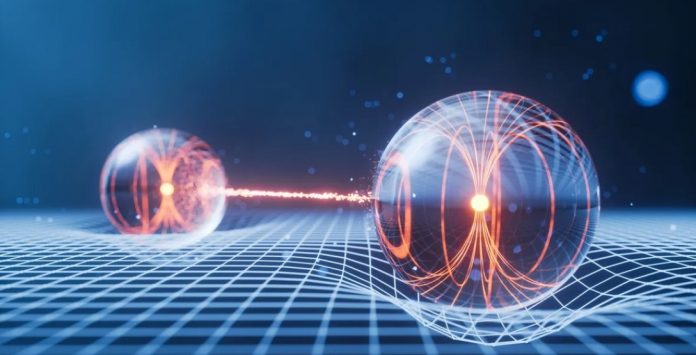Quantum confusion is one of the most mysterious phenomena of quantum physics, which is disturbing the imagination of not only scientists but also a wide audience. The confusion allows the particles, even if they are at a long distance from each other, instantly influence the condition of each other, which opens incredible prospects for quantum technologies. To date, this phenomenon has been used mainly for particles of the same type, such as photons. However, recently, scientists have been able to achieve quantum confusion between two completely different particles - a photon and a phonon.
In their work, physics proposed a new form of quantum confusion, which they called optocoustic intake. It combines photons (light quanta) and phonons (sound vibration quanta). This is a very important step for the development of quantum technologies, as it allows you to create more stable quantum systems that can withstand more noise - one of the main problems faced by quantum devices. Striving different types of particles is a huge step forward in quantum research. Optoacoustic confusion is more stable than classic folding pairs, since phonons are usually less sensitive to external noise. The difference between photons and phonons lies not only in the type of oscillations (light against sound), but also in the speed of their movement and energy levels. This allows you to create new opportunities for quantum calculations and communication, in particular for systems that require greater stability and reduce the impact of external factors.
To achieve optocoractic confusion, scientists use a process called Brilluen scattering. This is a phenomenon when light interacts with sound waves in the material that occurs under the influence of heat atoms. With the help of laser impulse and sound waves, physics were able to cause scattering, which quantum confuses particles with different energy levels. The peculiarity of this technology is that the process of scattering brylenuen can be carried out on chips that are capable of functioning at higher temperatures than traditionally required for quantum processes, where the temperature approaches absolute zero (minus 273 ° C). This makes the technology much more accessible and less costly.
Quantum confusion technologies are already actively used in various fields, such as quantum storage, quantum communication and quantum teleportation. Optoacoustic confusion has the potential to make these technologies more efficient, stable and accessible for practical use. Due to its ability to withstand more noise and operate at higher temperatures, it can be the basis for the development of new generations of quantum computers.
Despite the success, many experiments are needed to finalize the effectiveness of new technology. However, the first results already promise great potential, especially for quantum technologies, where stability and noise protection are critical for practical use.


